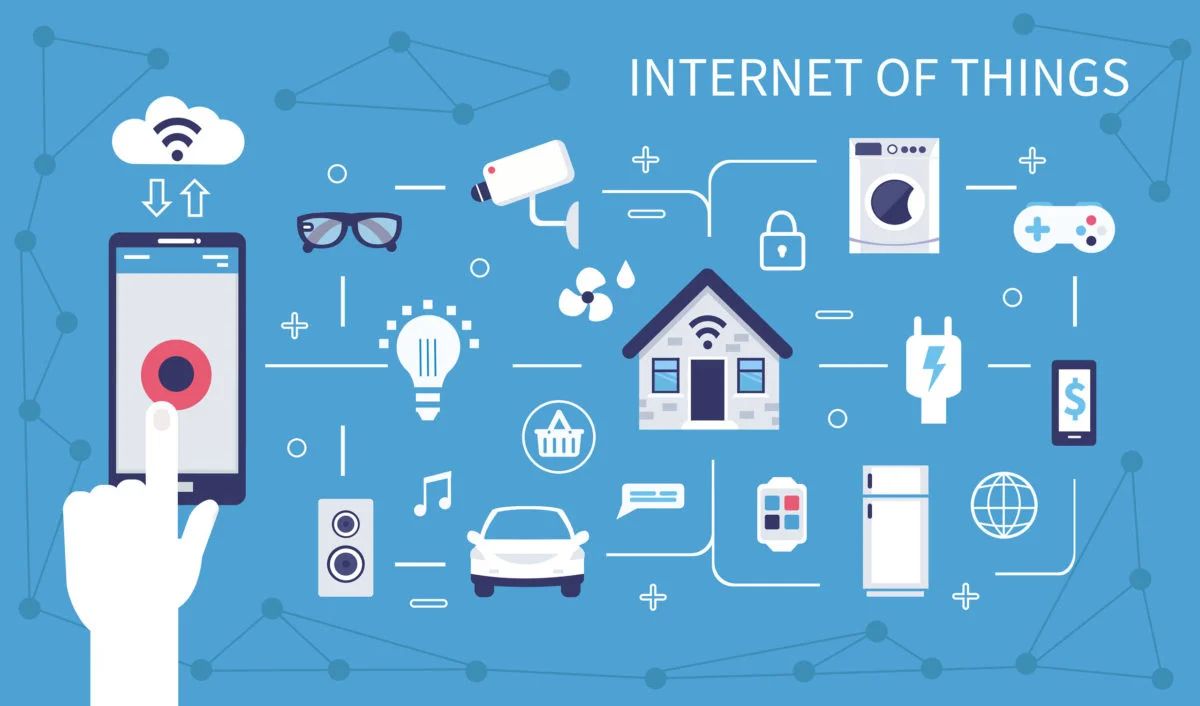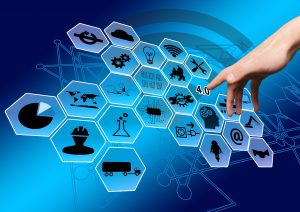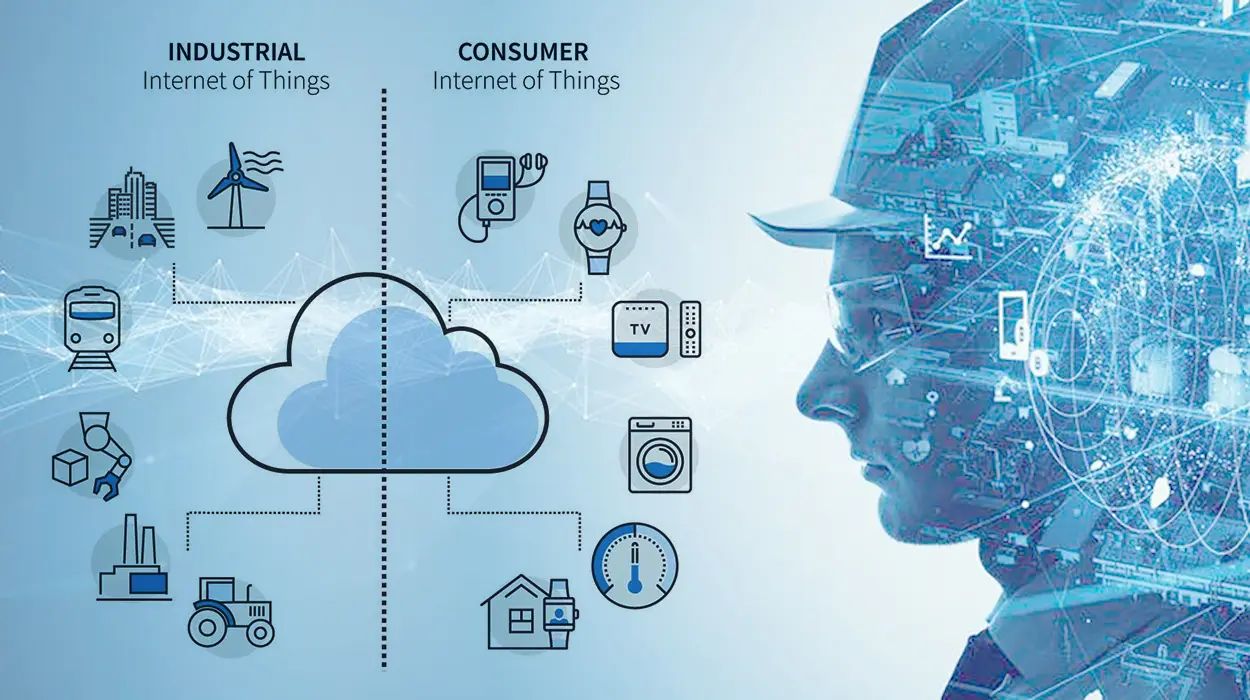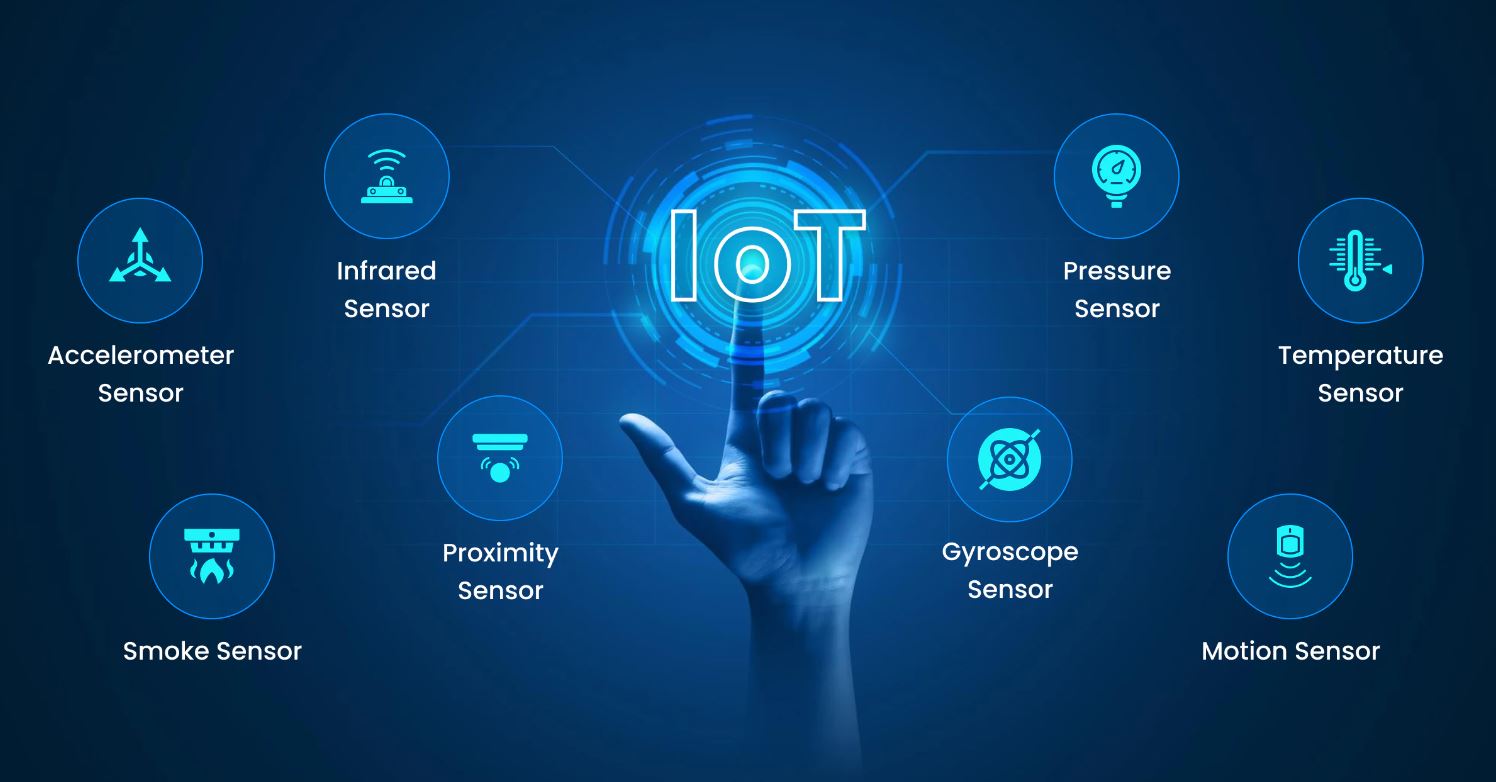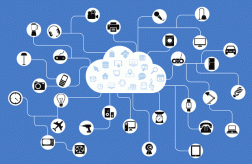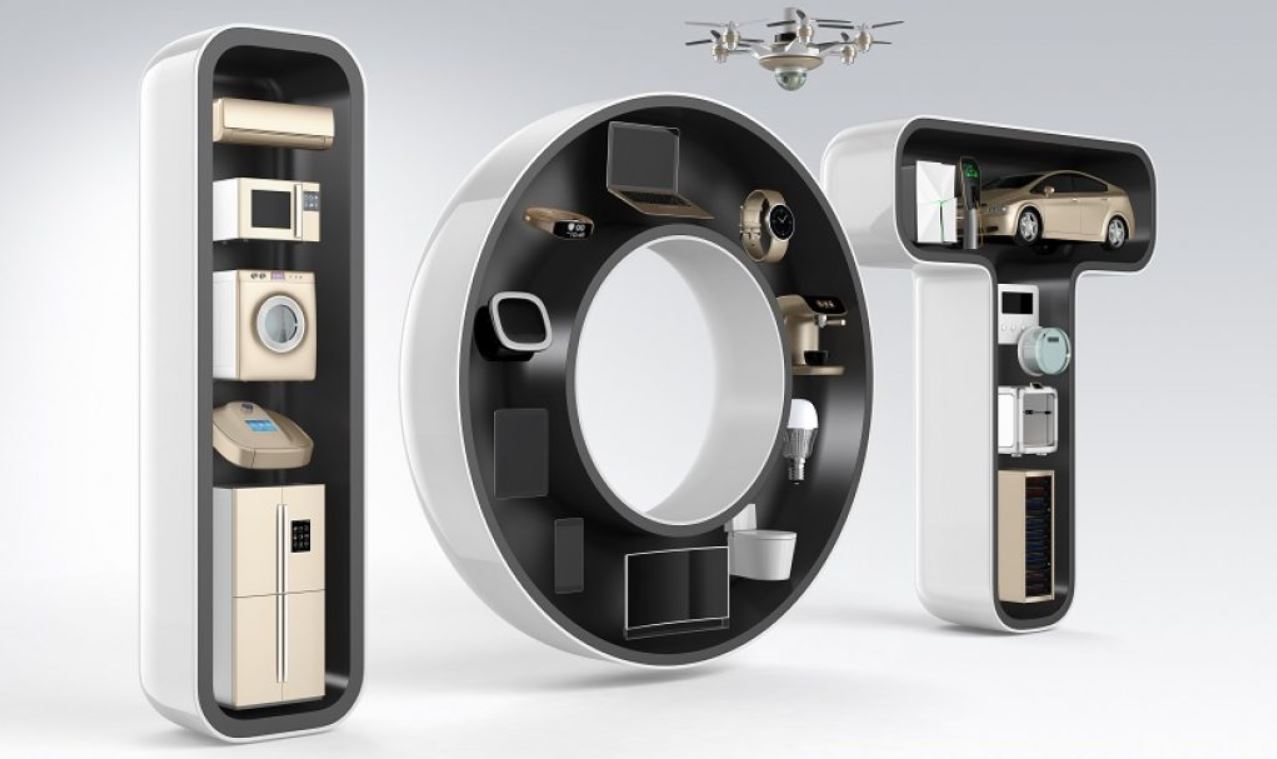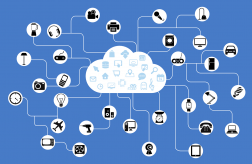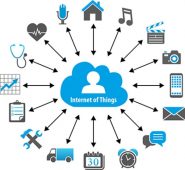What Is Internet of Things (IoT)
The Internet of Things (IoT) is revolutionizing the way we live and work. It is a concept that refers to the interconnection of various devices through the internet, allowing them to communicate, collect and exchange data, and perform tasks autonomously. In simple terms, IoT enables everyday objects to be connected and controlled via the internet, creating a network of smart devices.
IoT has opened up a plethora of opportunities in different sectors, including healthcare, transportation, agriculture, manufacturing, and more. From smart homes to smart cities, IoT is transforming our lives by making everything around us smart and connected.
At its core, IoT relies on the integration of sensors, actuators, and connectivity modules embedded in physical objects. These objects, often referred to as “smart devices,” are capable of gathering and transmitting data over the internet. This data can then be analyzed and utilized to make automated decisions or trigger specific actions.
The beauty of IoT lies in its ability to enhance efficiency, convenience, and safety. For instance, in the healthcare industry, IoT enables remote patient monitoring, where medical devices connected to the internet can transmit vital signs in real-time, allowing physicians to track patients’ health conditions and provide timely interventions.
In transportation, IoT plays a crucial role in improving road safety and traffic management. Smart traffic lights equipped with sensors can detect traffic patterns and adjust signal timings accordingly, reducing congestion and optimizing the flow of vehicles.
Moreover, IoT has also paved the way for smart homes, where devices such as thermostats, security cameras, and appliances can be controlled and monitored remotely. This level of automation and connectivity brings forth energy savings, increased security, and overall convenience for homeowners.
Overall, IoT has the potential to revolutionize numerous industries by enabling real-time data analysis, automation, and remote control of devices. However, as with any technological advancement, there are challenges and concerns associated with the widespread implementation of IoT. These include data security and privacy concerns, interoperability issues, and the need for appropriate regulations and standards to ensure seamless integration and protection of sensitive information.
The future of IoT is promising. As technology continues to evolve, we can expect to see even more advanced applications of IoT in various domains. From smart cities with interconnected transportation systems to personalized healthcare solutions, the possibilities are endless.
Definition of IoT
The Internet of Things (IoT) refers to the network of physical objects, devices, vehicles, and other items that are embedded with sensors, software, and connectivity, enabling them to collect and exchange data with each other. These objects, also known as “smart devices,” are connected to the internet, allowing them to communicate and interact with users and other devices, without requiring human intervention.
IoT encompasses a wide range of devices, including smartphones, wearables, home appliances, vehicles, industrial equipment, and more. The key characteristic of IoT is the ability of these devices to connect and share data seamlessly, creating an interconnected ecosystem of objects.
The data collected by IoT devices can be transmitted and analyzed in real-time, providing valuable insights and enabling informed decision-making. For example, a smart thermostat can collect data on temperature and occupancy in a building, and based on this information, automatically adjust the heating or cooling settings to optimize energy efficiency.
IoT is driven by three main components:
- Devices and Sensors: IoT devices are equipped with sensors, actuators, and connectivity modules that allow them to collect and transmit data. Sensors can measure various parameters such as temperature, humidity, pressure, location, and more, while actuators enable actions to be performed based on the collected data.
- Connectivity: IoT devices rely on various communication technologies, including Wi-Fi, Bluetooth, cellular networks, and even satellite connections, to exchange data with each other and with cloud-based platforms.
- Data Processing and Analytics: The vast amount of data generated by IoT devices needs to be processed and analyzed to extract meaningful insights. Cloud-based platforms, artificial intelligence, and machine learning algorithms play a crucial role in analyzing the data and deriving actionable information.
The applications of IoT are vast and diverse across different industries. From monitoring and optimizing industrial processes to enhancing healthcare services, IoT has the potential to transform various domains. It enables businesses to track inventory, improve supply chain management, and enhance customer experience through personalized services. It also allows individuals to automate their homes, enhance personal health monitoring, and create a more sustainable and connected environment.
As the IoT ecosystem continues to expand and evolve, it is important to address challenges such as data security, privacy concerns, interoperability, and scalability. With proper implementation and robust solutions, IoT has the potential to revolutionize how we interact with our surroundings and bring about a more connected and efficient world.
The Basics of IoT
At its core, the Internet of Things (IoT) is built upon the capability of everyday objects to connect to the internet and exchange data with each other. This connectivity enables these objects, also known as “smart devices,” to communicate and work together autonomously, without human intervention.
The foundation of IoT lies in the integration of three main components:
- Sensors and Actuators: IoT devices are embedded with various sensors that allow them to collect data from their surroundings. These sensors can measure parameters like temperature, humidity, light intensity, motion, and more. Actuators, on the other hand, enable devices to perform specific actions based on the data collected.
- Connectivity: IoT devices rely on different connectivity options to transmit and receive data. This includes technologies such as Wi-Fi, Bluetooth, cellular networks, and even satellite connections. These communication channels allow IoT devices to share information and interact with each other.
- Data Processing and Analytics: The data collected by IoT devices is sent to cloud-based platforms or edge computing devices for processing and analysis. Machine learning algorithms and artificial intelligence (AI) techniques are often employed to derive valuable insights from this data. These insights can then be used to make informed decisions or trigger specific actions.
One of the key advantages of IoT is its ability to enhance efficiency and convenience in various aspects of our lives. For example, in a smart home setup, IoT devices such as smart thermostats, lighting systems, and security cameras can be controlled and monitored remotely. This enables homeowners to save energy, increase security, and create personalized living environments.
In industrial settings, IoT plays a crucial role in optimizing processes and improving productivity. Connected sensors and actuators can monitor equipment performance, detect faults, and trigger maintenance activities automatically. This leads to reduced downtime, increased operational efficiency, and cost savings.
Furthermore, IoT has immense potential in the healthcare industry. With the help of wearable devices and remote monitoring systems, patients can be continuously monitored, and their health data can be transmitted to healthcare professionals in real-time. This allows for early detection of health issues, personalized treatment plans, and improved overall patient care.
Although IoT offers remarkable benefits, it also presents challenges that need to be addressed. Security and privacy concerns are paramount, as the vast amount of data collected by IoT devices raises the risk of unauthorized access or data breaches. Interoperability and standardization are also critical to ensure seamless communication and integration between different IoT devices and platforms.
The basics of IoT revolve around the concept of connectivity, data collection, and intelligent decision-making. By leveraging IoT technologies, businesses and individuals can unlock new opportunities, streamline processes, and create innovative solutions that can positively impact our lives across various domains.
IoT Devices and Sensors: Making Everything Smart
The proliferation of the Internet of Things (IoT) has led to the development and deployment of a wide range of smart devices and sensors. These devices and sensors play a crucial role in making everything around us smart and connected, revolutionizing the way we interact with our environment.
IoT devices encompass a vast array of objects, from everyday items such as smartphones and wearable devices to household appliances, vehicles, industrial equipment, and even infrastructure. These devices are embedded with sensors and connectivity modules, allowing them to collect and transmit data, and enabling them to communicate with each other and with users.
Sensors are the heart of IoT devices. They are responsible for capturing real-world information and converting it into a digital format that can be processed and analyzed. There are various types of sensors used in IoT devices, including:
- Temperature Sensors: These sensors measure the temperature of their surroundings, enabling applications such as climate control, energy management, and equipment monitoring.
- Humidity Sensors: Humidity sensors detect and measure the moisture content in the air, facilitating applications such as agricultural monitoring, HVAC systems, and indoor air quality control.
- Proximity Sensors: Proximity sensors detect the presence or absence of objects in close proximity, enabling applications like automatic door opening, parking assistance, and security systems.
- Accelerometers: Accelerometers measure changes in linear acceleration and enable applications such as motion detection, activity tracking, and vibration monitoring.
- GPS Sensors: GPS sensors determine the geographical location of devices, making applications like navigation, asset tracking, and geofencing possible.
- Light Sensors: Light sensors measure the intensity of light, enabling applications such as automatic brightness adjustment in displays, smart lighting systems, and energy-efficient street lighting.
These sensors, along with others like pressure sensors, gas sensors, and motion sensors, allow IoT devices to gather data about their environment and perform specific functions based on that data. The collected data can also be transmitted to a cloud-based platform for further analysis or utilized in real-time to trigger actions or notifications.
Smart sensors are employed in a wide range of applications across industries. In manufacturing, IoT devices equipped with sensors can monitor and optimize equipment performance, ensuring smooth and efficient operations. In agriculture, sensors can provide real-time data on soil moisture levels, temperature, and crop health, enabling farmers to make informed decisions about irrigation and pest control.
The applications of IoT devices and sensors are not limited to industrial settings. In our homes, we can find smart devices such as voice-controlled assistants, smart thermostats, security cameras, and smart appliances that enhance convenience, comfort, and security. In healthcare, IoT devices like wearable fitness trackers and remote monitoring systems enable individuals to keep track of their health and receive personalized care.
As technology advances, IoT devices and sensors will continue to evolve, becoming more compact, energy-efficient, and capable of collecting and transmitting more diverse types of data. This will open up new possibilities for innovative solutions and transformative applications that can further enhance our everyday lives.
How Does IoT Work?
The Internet of Things (IoT) works by connecting devices, sensors, and objects to the internet, allowing them to communicate, collect and share data, and perform tasks autonomously. The process involves several key components that work together to enable seamless connectivity and data exchange.
Here is a simplified breakdown of how IoT works:
- Devices and Sensors: IoT devices, such as smartphones, smart appliances, and industrial equipment, are embedded with sensors and actuators. These sensors gather data from the physical environment, capturing information such as temperature, humidity, location, motion, and more. The actuators enable devices to perform actions based on the collected data.
- Connectivity: IoT devices need a means to transmit and receive data. They are equipped with various communication technologies, including Wi-Fi, Bluetooth, cellular networks, and even satellite connections. These connectivity options allow devices to connect to the internet and to each other, forming a network of interconnected objects.
- Cloud Computing: The data collected by IoT devices is often sent to cloud-based platforms for storage, processing, and analysis. Cloud computing provides the computational power and storage capacity required to handle the massive amount of data generated by IoT devices. It also enables real-time data analytics and allows for remote access and control of IoT devices.
- Data Processing and Analytics: Once the data reaches the cloud or edge computing devices, it undergoes processing and analysis. Machine learning algorithms and artificial intelligence techniques are often employed to derive meaningful insights from the collected data. This analysis can provide valuable information for decision-making, trigger specific actions, or enable predictive maintenance.
- User Interface and Applications: The results of data analysis and insights can be displayed through user interfaces, making it easy for users to interact with IoT devices and systems. These interfaces can be web-based, mobile applications, or even voice-controlled assistants. Applications built on top of IoT technology enable users to monitor and control devices, set preferences, receive notifications, and customize settings according to their needs and preferences.
Working together, these components create an ecosystem where devices, sensors, and users can interact seamlessly. IoT technology enables devices to communicate with each other and share data, allowing for automation, remote monitoring, and intelligent decision-making.
For instance, in a smart home setup, a user can control various IoT devices, such as thermostats, lighting systems, and security cameras, via a mobile app. The app sends commands to the respective devices over the internet, triggering actions like adjusting the temperature, turning on/off lights, or receiving notifications when security sensors are triggered.
Industrial settings can leverage IoT to optimize production processes by collecting data from sensors embedded in equipment, analyzing it in real-time, and automatically adjusting parameters for improved efficiency. For example, sensors on manufacturing equipment can detect anomalies or signs of impending failure, triggering maintenance alerts before any breakdown occurs.
While IoT offers tremendous benefits, ensuring the security and privacy of the data exchanged in IoT ecosystems is crucial. Robust security measures, such as encryption, authentication, and secure protocols, must be implemented to protect sensitive information and prevent unauthorized access.
As IoT technology continues to advance, we can expect even more innovative applications and seamless integration of devices, enabling us to lead smarter, more connected lives.
Benefits of IoT Technology
The Internet of Things (IoT) technology offers a myriad of benefits across various industries, revolutionizing the way we live, work, and interact with the world around us. From improving efficiency and convenience to enhancing safety and sustainability, IoT has the potential to transform countless aspects of our lives.
Here are some key benefits of IoT technology:
- Efficiency: IoT enables automation and optimization of processes, leading to increased efficiency. Connected devices and sensors can collect real-time data, allowing for predictive maintenance, streamlined inventory management, and optimized energy consumption. This can save time, resources, and costs.
- Convenience: IoT devices make our lives more convenient by providing seamless control and monitoring capabilities. From smart homes with voice-activated assistants to wearable devices that track our health and fitness, IoT technology simplifies and enhances our daily tasks and activities.
- Safety and Security: IoT enhances safety and security by providing real-time monitoring and alerts. For example, IoT-enabled security systems can detect intrusions and send notifications to homeowners or authorities. Industrial environments can utilize IoT sensors to prevent accidents by monitoring equipment conditions and ensuring employee safety.
- Sustainability: IoT plays a crucial role in promoting sustainability and reducing environmental impact. Smart energy management systems can optimize energy usage based on data from sensors, leading to energy savings and reduced carbon footprint. IoT can also be utilized in agriculture to monitor water usage, optimize irrigation, and reduce waste.
- Remote Monitoring and Healthcare: IoT enables remote monitoring of patients, expanding access to healthcare services. Wearable devices and remote monitoring systems can collect and transmit real-time health data to healthcare professionals, enabling early detection and personalized care. This is particularly beneficial for elderly or remote patients who require continuous monitoring.
- Data-Driven Insights: IoT generates a massive amount of data that can be analyzed to extract valuable insights. These insights help businesses make informed decisions, improve customer experiences, and identify patterns or trends that can drive innovation. Real-time data also enables proactive problem-solving and decision-making.
- Improved Productivity: IoT technology can enhance productivity by optimizing workflows, automating routine tasks, and enabling real-time collaboration. Connected devices and systems can streamline processes, eliminate manual efforts, and provide seamless communication, resulting in increased productivity and efficiency.
- Enhanced Customer Experience: IoT allows businesses to personalize products and services based on individual preferences and needs. Connected devices can gather data on customer behavior, enabling businesses to offer tailored experiences, personalized recommendations, and proactive customer support.
The benefits of IoT technology are vast and far-reaching, with potential applications in almost every facet of our lives. However, it is important to address challenges such as data security, privacy concerns, and interoperability to fully harness the potential of IoT and ensure a safe and reliable ecosystem.
As IoT continues to evolve, the possibilities for innovation and improvement are endless. By leveraging the power of IoT, individuals and businesses can unlock new opportunities, improve efficiency, and create a smarter, more connected world.
Applications of IoT in Various Industries
The Internet of Things (IoT) has a wide range of applications across various industries, transforming the way businesses operate and providing innovative solutions to industry-specific challenges. From healthcare to agriculture to transportation, IoT technology is revolutionizing these sectors and improving efficiency, productivity, and customer experiences.
Here are some notable applications of IoT in different industries:
- Healthcare: IoT is revolutionizing healthcare by enabling remote patient monitoring, wearable health devices, and telemedicine. IoT devices can collect real-time health data, allowing healthcare professionals to monitor patients remotely and make timely interventions. This technology enhances patient care, reduces hospital visits, and facilitates early disease detection.
- Manufacturing and Industrial Automation: IoT plays a crucial role in optimizing manufacturing processes and enabling automation. Sensors embedded in equipment monitor performance, detect anomalies, and enable predictive maintenance. IoT also enables real-time inventory tracking, supply chain optimization, and improved operational efficiency.
- Agriculture: IoT is transforming agriculture by enhancing precision farming techniques. Smart sensors can monitor soil moisture, temperature, and nutrient levels, enabling farmers to optimize irrigation, fertilization, and crop yield. IoT also helps in monitoring livestock health, tracking assets, and improving overall farm management.
- Transportation and Logistics: IoT is improving safety, efficiency, and optimization in transportation and logistics. Fleet management systems equipped with IoT sensors enable real-time tracking, route optimization, and predictive maintenance. Smart traffic systems reduce congestion and facilitate smoother traffic flow. In supply chain management, IoT devices provide real-time visibility, enhance inventory management, and optimize resource allocation.
- Smart Cities: IoT is driving the development of smart cities, where connected infrastructure improves resource management, energy efficiency, and citizen experiences. Smart grids optimize energy consumption, intelligent transportation systems improve traffic flow, and connected streetlights save energy. IoT also aids in waste management, public safety, and environmental monitoring, making cities more sustainable and livable.
- Retail: IoT is reshaping the retail industry by providing personalized and immersive shopping experiences. IoT-enabled beacons and RFID tags enable location-based marketing, personalized recommendations, and seamless checkout processes. Smart shelves and inventory management systems optimize stock levels, reduce wastage, and enhance supply chain efficiency.
- Energy Management: IoT technology enables smart energy management systems that optimize energy consumption in homes and buildings. Smart thermostats and lighting systems adjust settings based on occupancy and time, reducing energy waste. IoT also facilitates demand response programs, where devices communicate with the electrical grid to balance supply and demand.
These are just a few examples of how IoT is transforming industries. The versatility and adaptability of IoT technology make it applicable in numerous other domains, such as hospitality, education, finance, and more. By implementing IoT solutions, businesses can gain a competitive edge, improve operational efficiency, and deliver enhanced experiences to their customers.
However, it is essential to address concerns related to data privacy, security, and interoperability when implementing IoT solutions. Appropriate measures must be taken to protect sensitive information and ensure seamless integration and communication between different IoT devices and platforms.
The relentless advancement of IoT technology promises even more innovative applications and opportunities for industries, paving the way to a more connected and efficient world.
Challenges and Concerns in IoT
While the Internet of Things (IoT) holds immense potential to transform industries and improve our lives, it also brings forth several challenges and concerns that need to be addressed for its widespread adoption and successful implementation.
Here are some of the key challenges and concerns in IoT:
- Security and Privacy: As IoT devices collect and transmit vast amounts of data, ensuring the security and privacy of this data becomes crucial. IoT devices can be vulnerable to cyberattacks, leading to unauthorized access, data breaches, or even the compromise of critical infrastructure. Establishing robust security measures, including encryption, authentication, and secure protocols, is vital to protect sensitive information.
- Interoperability: The interoperability of different IoT devices and platforms is often a significant challenge. With the diverse range of manufacturers and communication protocols, IoT systems may face compatibility issues, hindering the seamless integration and communication between devices. The development and adherence to industry standards and protocols can help ensure interoperability among IoT devices.
- Scalability: As the number of connected devices and sensors continues to grow rapidly, scaling IoT infrastructures becomes challenging. Managing and processing the massive volume of data generated by IoT devices and ensuring robust connectivity across a large number of devices require scalable and robust systems that can handle the increasing demands of IoT deployments.
- Data Management and Analytics: IoT generates a vast amount of data, and effectively managing, processing, and analyzing this data can be a complex task. Organizations need to invest in scalable and efficient data storage and management systems. Additionally, advanced analytics tools and techniques, such as machine learning and artificial intelligence, are required to extract meaningful insights from the data and drive actionable outcomes.
- Regulatory and Ethical Concerns: The rapid growth of IoT technology has raised regulatory and ethical concerns surrounding data governance, privacy, and responsible usage. Regulations need to be developed to govern data collection, storage, and usage, ensuring transparency and protection of individual privacy rights. Additionally, ethical considerations regarding data ownership, consent, and the responsible use of IoT-generated data need to be addressed.
- Power Consumption and Sustainability: IoT devices, especially those with wireless connectivity, require power to operate. Balancing the need for constant connectivity with power consumption is a challenge. Energy-efficient designs, optimized power management, and the use of renewable energy sources are important to ensure the sustainability of IoT deployments and minimize their environmental impact.
Addressing these challenges and concerns requires collaboration among industry stakeholders, policymakers, and technology experts. Striking a balance between innovation and security, and ensuring privacy and ethical usage of data are crucial for the successful and responsible implementation of IoT technology.
By proactively addressing these challenges, the potential of IoT can be fully realized, leading to enhanced productivity, improved quality of life, and a more connected and efficient future.
The Future of IoT
The future of the Internet of Things (IoT) holds immense promise and potential. As technology continues to advance at an unprecedented pace, IoT is expected to play an increasingly significant role in transforming industries and reshaping the way we interact with the world around us.
Here are some key aspects that highlight the future of IoT:
- Expansion of IoT Ecosystem: The number of connected devices is projected to grow exponentially, leading to a more extensive IoT ecosystem. As technology becomes more affordable and accessible, various objects and devices will be integrated into the IoT network, creating a truly connected world. This expansion will facilitate new applications, services, and possibilities.
- Edge Computing and Processing: The adoption of edge computing, where data processing and analysis occur closer to the source, will become more prevalent. Edge devices will have increased processing capabilities, enabling them to handle complex computations locally. This trend will reduce latency, improve real-time decision-making, and enhance the overall efficiency of IoT systems.
- 5G and Connectivity: The deployment of 5G networks will enable faster and more reliable connectivity, unlocking new possibilities for IoT. With higher data transfer speeds and lower latency, 5G will support the seamless integration of IoT devices, enabling applications such as autonomous vehicles, smart cities, and real-time remote surgeries.
- Artificial Intelligence and Machine Learning: AI and machine learning will play a crucial role in the future of IoT. With the ability to analyze vast amounts of data in real-time, AI algorithms will provide valuable insights and enable autonomous decision-making. AI-powered IoT systems will learn from user preferences, adapt to changing conditions, and continuously enhance performance.
- Industry-Specific Innovations: IoT will bring about industry-specific innovations tailored to address unique challenges. For example, in healthcare, wearable devices and remote monitoring systems will enable personalized and proactive patient care. In manufacturing, IoT-enabled robotics and automation will further optimize production processes. The future of IoT will empower industries to achieve enhanced efficiency, productivity, and customer experiences.
- Enhanced Security and Privacy: With the increased adoption of IoT, there will be a growing focus on improving security and privacy measures. Greater emphasis will be placed on robust encryption, authentication protocols, and secure data transmission. Additionally, regulations and standards will be established to protect consumer data and ensure responsible usage of IoT technology.
- Data Monetization and Business Models: As IoT generates vast amounts of data, there will be increased emphasis on data monetization and new business models. Organizations will explore innovative ways to leverage IoT data to create value, drive revenue, and enhance customer experiences. Data marketplaces, predictive analytics, and personalized services will be at the forefront of these new business models.
The future of IoT is full of potential, enabling a more connected, efficient, and sustainable world. However, as IoT continues to evolve, it is crucial to address challenges such as security, privacy, interoperability, and ethical considerations. Collaboration between industry stakeholders, policymakers, and technology experts will play a vital role in ensuring a responsible and beneficial future for IoT.
As IoT technology becomes increasingly integrated into our daily lives, it is essential to balance innovation with considerations of privacy, security, and ethical use of data. With thoughtful technological advancements and responsible implementation, IoT will continue to shape our future, enabling us to lead smarter, more connected lives.







